NBFCs: Experts discuss key reasons of crisis, its impact on economy and what the regulators can do

KV Prasad Jun 13, 2022, 06:35 AM IST (Published)
 Listen to the Article (6 Minutes)
Listen to the Article (6 Minutes)
Summary
Non-banking finance companies (NBFCs) along with mutual funds recently faced a severe liquidity crunch following a series of loan repayment default since late September by IL&FS and its group companies. Coming to the rescue of cash-strapped NBFCs, State Bank of India recently decided to buy their assets to the tune of Rs 45,000 crore, a …
Continue reading “NBFCs: Experts discuss key reasons of crisis, its impact on economy and what the regulators can do”
Non-banking finance companies (NBFCs) along with mutual funds recently faced a severe liquidity crunch following a series of loan repayment default since late September by IL&FS and its group companies.
Coming to the rescue of cash-strapped NBFCs, State Bank of India recently decided to buy their assets to the tune of Rs 45,000 crore, a move that will provide liquidity support to the ones facing headwinds.
CNBC-TV18’s Latha Venkatesh along with Srinivasan Varadarajan, deputy managing director, Axis Bank, SS Mundra, former deputy governor, Reserve Bank of India (RBI) and Neeraj Gambhir, former head of fixed income at Nomura and now an independent expert, discussed the key reasons for NBFCs being under pressure and with credit growth likely to fall into single digits, how will it impact the economy and how should the regulators respond.
Q: Do you think regulators have to do something proactively, open a tap for NBFCs or Mutual Funds?
Mundra: You have raised a pertinent issue but, firstly, let us get few basics right. NBFC and HFC put together is a large space and there are dozens of spaces within that. To compare a NBFC with a large book which has a model of being a lender, an owner, a promoter is too hasty a reaction. I think once things settle down, clarity will come and more data will be available … whatever has happened initially, if you look at it, probably there is some realisation in the market that what we are discussing is more about the growth and margin compression rather than the solvency issue. There could be stray cases here and there and cases might be happening in normal course of business as well but when there is so much sensitivity around, everything gets projected.
So in the medium-to-long run, there would be a need to have a relook, regulatory framework, ALM, the capital recognition – all those things are fine but to my mind, they are medium and long-term things. If I put an apology, if there is a patient, first we have to check if all the vitals are working in satisfactory condition and then think about long-term administration of drugs.
So, I think at this point of time, there is a need for regulatory action and that too a coordinated action between various regulators.
Q: So exactly what you want the Financial Stability and Development Council to do?
Mundra: Even if there has to be a relook at regulation, it should be done in a calibrated manner and it should be done over medium to long-term. Suddenly, doing any course correction, while the liquidity issue remains unaddressed, will create only more instability in the system.
You should also be mindful that next three months is period when there is credit offtake, there is also sowing season. So, we have to look at the larger issue of financial stability as also the sector consistency.
Q: Does any of the current scenario remind of the fairly deep pain we went through in 2002-2003? Is there likeness at all or like we had discussed previously in similar show, we are not going to get something like CR Bhansali blow up on your face?
Varadarajan : I don’t think we should look in to the past. With regards to the readjustment of liability profile from mutual funds into banks, I think the challenge before us right now is that readjustment has to happen at a very sharp pace, the numbers you rolled out in terms of redemption, in terms of October-November and December, are fairly large and that readjustment needs to happen in a very short period of time and I think that is the challenge in front of us right now. As Mundra says regulator needs to look at the data and see how exactly what is going to happen or what needs to be done to facilitate this, I think that is the key question here.
To decide whether there is a systemic issue, whether on asset side, liability side – all those things need to be addressed in the medium-term but today, in terms of readjustment of liability profile of the participants which needs to happen in a quick and seamless way, how do we achieve that and that is a huge challenge.
Q: That is my question to all three of you – Is there something the regulator needs to do now or wait for the first signs of systemic crisis? Already there is news of one real estate company which has been downgraded and all stocks of all NBFCs are down close to 10 percent, so then equity raising also becomes a problem and more people want to sell and more companies which are sitting with treasury to put in their liquid fund are pulling back not wanting to put it now. So my point is has the situation already come to a pass, where something proactive needs to be done?
Varadarajan: Clearly from a point of what is being talked about in terms of buyout portfolios- that is possibly the best way forward because you are lending to the entity today in a situation where you do not have complete information of overall obligations. Therefore you would have to look at the assets and see what you are comfortable with in terms of purchase and then provide liquidity accordingly. That is the first step, which is possible and which is something to some extent banks can do, that is what is being talked about.
Q: But buyouts require capital also?
Varadarajan: It will all have to be priced in.
Q: Do you think that is possible Mr Mundra, I thought there is lot of capital inadequacy among public sector banks and liquidity shortage in private sector banks?
Mundra: No, let us look into details. One, liquidity has flow out of the MF industry but it does not mean that there was sudden spurt in investment and liquidity has got absorbed there. Liquidity is within the broader financial system, it might have moved from mutual funds, it might be sitting with the banks.
So what was the bank’s liquidity position maybe a month back might have undergone a significant change because there has been shift of liquidity from one place to another, so let us appreciate that. What I am trying to tell is that number one, I think action is needed in short run and not in the long run.
Q: Reducing capital requirements for certain categories, I don’t know if the RBI would go that far and this has been a fairly austere central bank and for good reasons because we are coming out of fairly difficult asset quality problem.
Mundra: I am not telling that across the board you reduce capital requirement, if let us say a portfolio buyout is there and portfolio is rated in equivalent category, then the kind of capital comfort the bank enjoys while doing the direct lending, if it is comparable to that, I think it will be a win-win situation for both the sides. That is what I am indicating.
Q: Your thoughts on near-term liquidity issues?
Gambhir: Firstly, I agree with what Mr Mundra said that you need to have a targeted action plan ready if required and actually communicate that to the market to sort of comfort because it is crisis of confidence and you need to build confidence back into the system.
I feel this kind of problems get accentuated when the system itself is deficient in liquidity and banks have to go to the RBI to borrow.
… Finally, the buyout of the portfolios according to me is the best route of that rebalance and it also gives confidence to the system that the asset quality is not an issue because remember the buyouts are actually targeted buyouts – there are specific pools of assets that the banks will look at and they will do due diligence of the portfolio of these companies.
Q: With loan growth most likely coming down to single digits in FY19. What other ramifications?
Gambhir: I think it’s a genuine concern because while we have seen that NBFCs and mutual funds have been providing credit to the system for about two years, the banks have been stagnant. Now with this growth also coming down, the overall credit growth in the system will go down and it will have an implication on the longer-term growth and therefore in 6-12 months, forecast of overall GDP growth need to be relooked at … It feels like we will need another 6-12 months before some of the big asset quality issues are resolved and banks have taken cognizance of that and are ready to move on.
Q: As a banker how would you look at this – how do credit crunches normally pan out? Growth shrinks?
Varadarajan: I think it is a good opportunity for banks. Space is open up as far as banks are concerned to do incremental lending but to say that the banks can fill in all the space which NBFCs have been lending to in a short period of time, will be very optimistic. So to that extent I agree that consumption was spurring, a lot of the growth is going to stall a bit on the back of availability of financing.
Q: Private sector has a liquidity problem. The loan to deposit ratio is running at 100 percent. Therefore, how will you all address the credit problem?
Varadarajan: If the shift in deposits from mutual funds to banks gain momentum then deposit growth is going to be in the second half at a much higher pace than what we saw in the first half and on the back of it the banks will have incremental appetite to lend.
Q: Any answers. More importantly a government that is about to seek is mandate again and is worried about an Ayushman Bharat expenditure or MSP expenditure. Will it even give the promised capital to the PSU banks?
Mundra: Let’s start with the belief that the capital infusion which was assured would at least come in. So it will be a good point to start with but I also agree that in view of the developments and the fact that we have already crossed more than half of the current financial year and next three months are very crucial.
Banks, obviously they have the capital constraint within public sector banks, as you said, but there also are public who have the cushion available, there are others who do not have the cushion and if some of the resolution happening, this will also be releasing some of the capital.
Q: Is there anything that regulators or government can do?
Gambhir: I think the situation warrants a very close monitoring and if required some steps to be taken very quickly to build the confidence back in the system. As I said earlier liquidity in the system is crucial because that is very-very important factor in these kind of circumstances and one needs to be cognizant of the fact that this means readjustment in the banking system versus NBFCs and that could have some implications though may not be very stark or very sharp, as Mr. Mundra said, but there will be some implication of the growth going forward. So we need to figure what is it that we can do to counter or offset that.
Q: A question on asset quality – as cash becomes tight, assets which otherwise would have remained green, can they capitulate like we hear about builder loans now?
Varadarajan: I wouldn’t look at it as a price issue. I think in this situation price is secondary, availability of finance is primary. So that extent the sources of finance which people used to rely on as they change and as the composition of financing changes, clearly people need to quickly adapt to that and pricing would be secondary. So as I said as, long as the segments which have to move from both on the asset side and liability side – move in tandem and quickly, I think we can meet the challenge but if there is a lag in terms of the movement from rebalancing from assets and liabilities from on the NBFCs’ balance sheets and banks’ balance sheets, we could come across issues.

Elon Musk forms several ‘X Holdings’ companies to fund potential Twitter buyout
3 Mins Read
Thursday’s filing dispelled some doubts, though Musk still has work to do. He and his advisers will spend the coming days vetting potential investors for the equity portion of his offer, according to people familiar with the matter

KV Prasad Journo follow politics, process in Parliament and US Congress. Former Congressional APSA-Fulbright Fellow



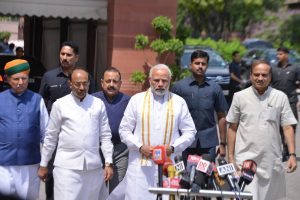






 Listen to the Article
Listen to the Article  Daily Newsletter
Daily Newsletter





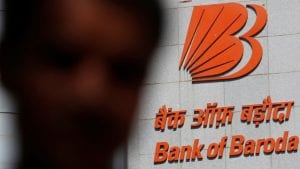
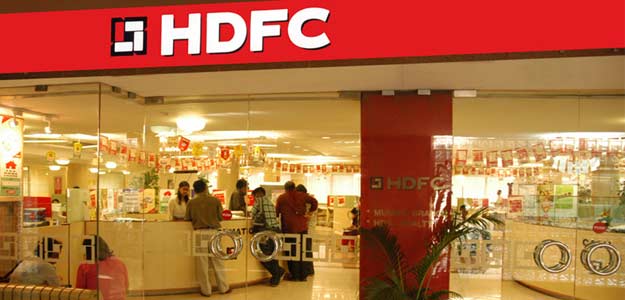


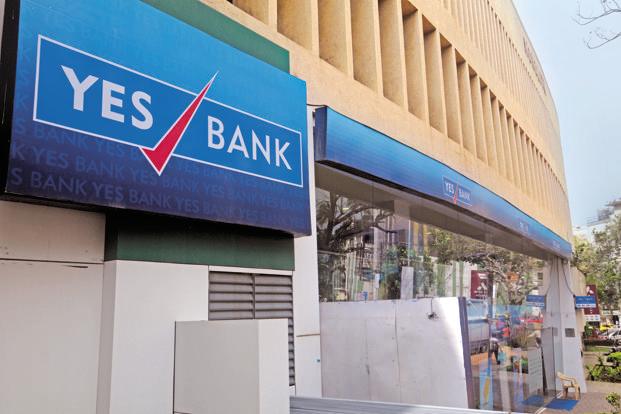

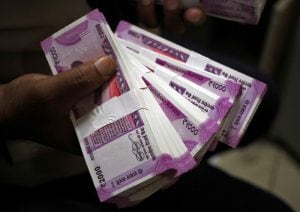
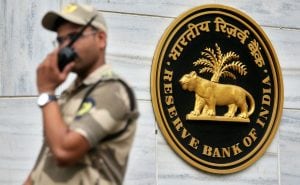
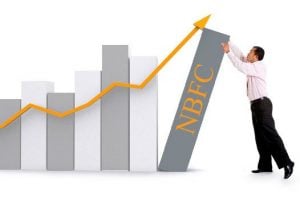
Recent Comments